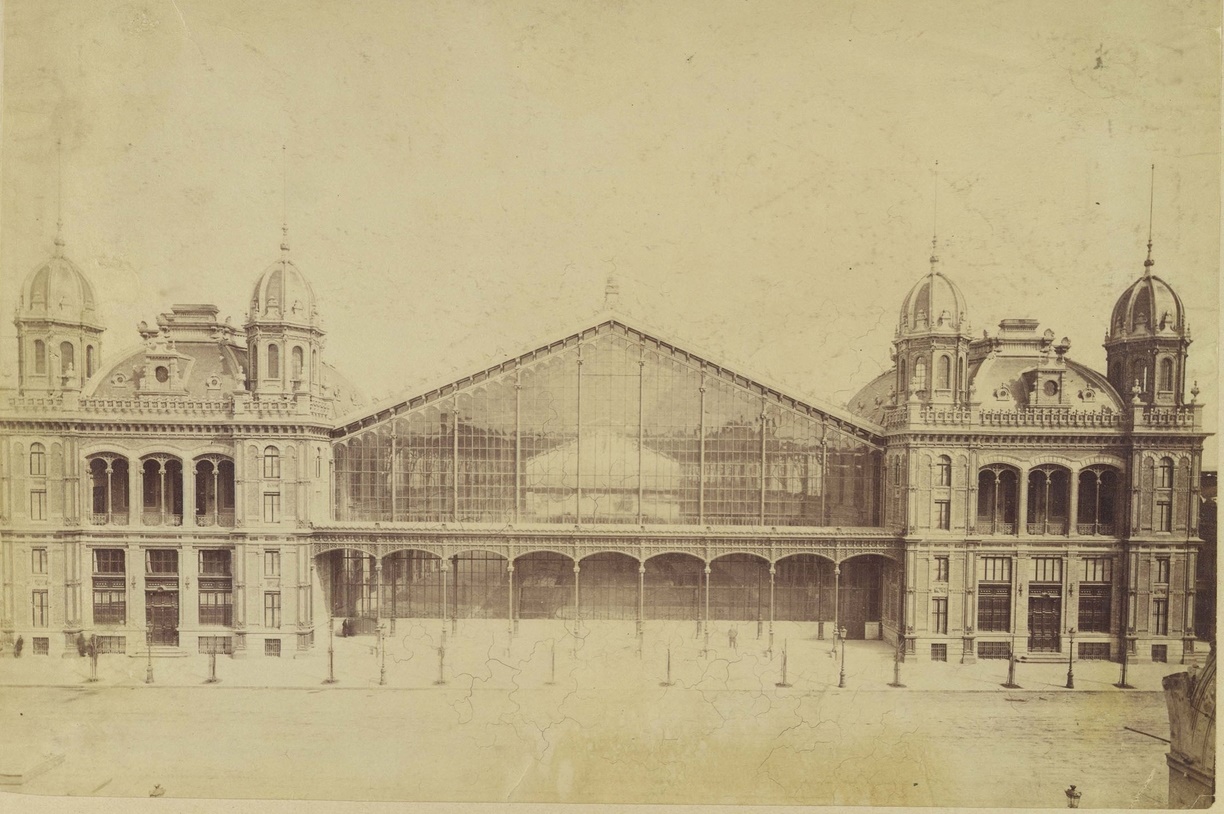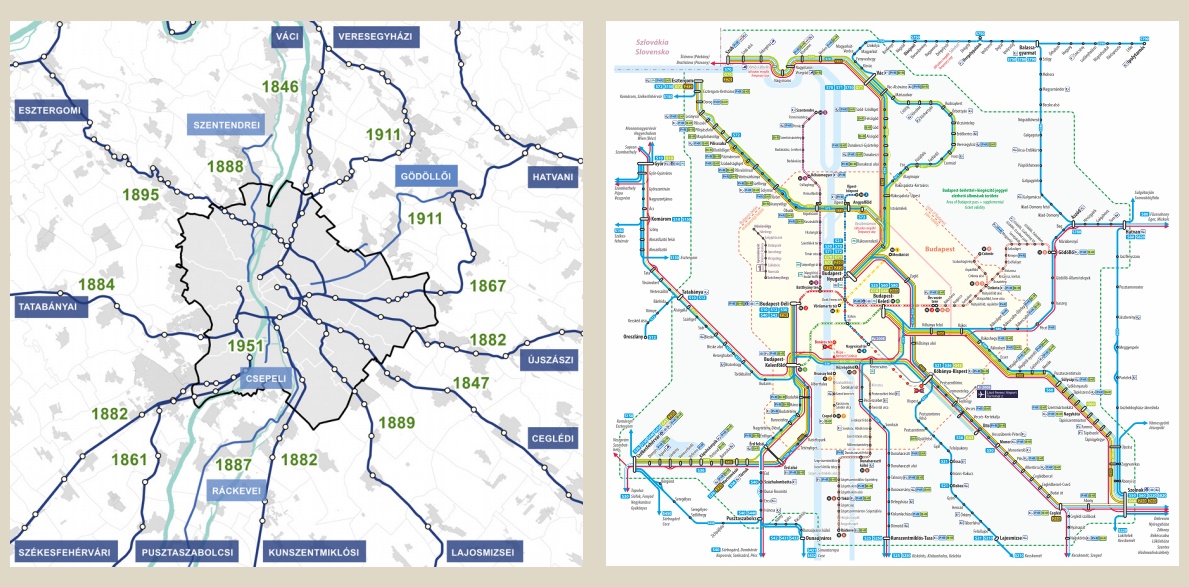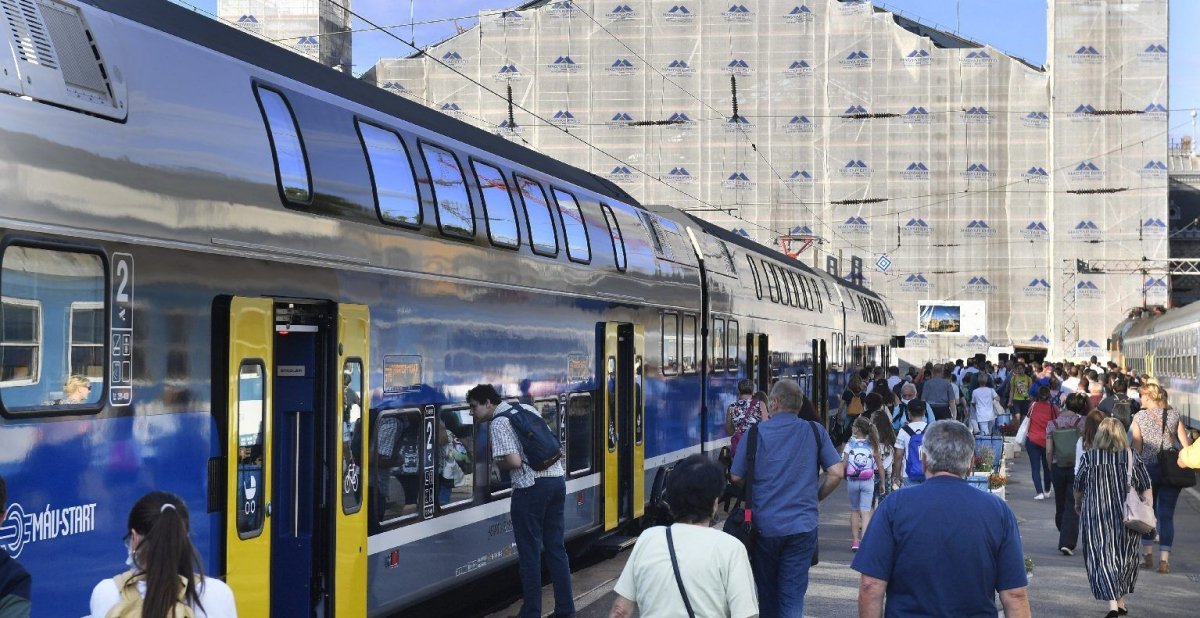Considering railway as the primary means of transport between Budapest and the agglomeration and giving it a major role within the city, seems like simple ideas. Yet, it took one hundred and fifty years to bring this idea to life in Hungary. This solution is already part of the transport network in other countries and cities, not only in Western Europe but also in several Central European cities, such as Prague or Warsaw.

The Eastern Railway Station in September 2018 (Photo: Balázs Both/pestbuda.hu)
The Budapest Development Centre has created a new plan to be implemented over 20 years. The goal: integrate this “hidden” network of Budapest, i.e. its railway lines, into urban transport. The idea is also ideal because the railway network covers most of the city, does not create traffic jams and enables quick travel.

The Western Railway Station in 1878. Railway terminuses are no longer considered an ideal solution. The future may lie in an underground rail connection (Photo: Fortepan/Budapest Archives. Reference no.: HU.Bfl.xv.19.d.1.07.125)
The strategy's primary goal is to reduce vehicle traffic. The budapestvasut2040.hu website, the website created for the Budapest Agglomeration Railway Strategy, justifies the new approach with the following data:
“Since 2010, the road vehicle fleet in the Central Hungary region has grown from 1 million to 1,250,000. In the agglomeration, the growth rate is twice that of the capital, the car fleet has grown 36% in 10 years.
Roads into Budapest are full and cannot be expanded. Even if they could be, expansion would not provide a solution as there is no space for the influx of cars in the capital.”
Air pollution is estimated to cause 300 million HUF loss in the economy of Budapest annually.
A railway tunnel to connect the Southern and Western railway stations is a central element of the Budapest Agglomeration Railway Strategy. - Szilárd Zielinski was awarded the first Hungarian doctorate in engineering in 1901 for designing such a solution. The current plan is similar to that developed by Zielinski: it envisions rail lines connected under the city and high-speed urban trains. The necessary railway yards would operate on the edge of the agglomeration ring, in Szolnok or Székesfehérvár, where the infrastructure needed is already available. In such a system, trains would follow each other much more frequently.

Szilárd Zielinski's plan from 1901, in which he indicated not only the tunnel between the railway stations but also the urban underground railway (Source: A Magyar Mérnök- és Építész-Egylet Közlönye, 1901/10)
The program also contains another tunnel, one that connects the suburban railway lines of north Buda with those of southern Pest, creating the Metro No. 5.
Another significant element of the plan is to rethink, transform and develop rail lines on the surface. The entire network has to be renovated, to begin with, as it is in a run-down state. However, even more importantly, transfer options between rail and public transport have to be created at major junctions.

Passengers at the Eastern Railway Station (Photo: mavühm.hu)
The first phase of this, the construction of the Southern Ring Railway, is already underway. A four-track line is being built between Kelenföld and Ferencváros, with new urban stations to encourage rail travel within the city and between the agglomeration and the Budapest area.
However, other urban railways also need to be developed. This not only means that the infrastructure will be modernised but an entirely new approach. As Dávid Vitézy, the head of the Budapest Development Centre characterised it: Passengers should not go to the station after checking the timetable but know that a train will come within a quarter of an hour no matter what happens.

Railway lines leading to Budapest and the date of their construction (Source: budapestvasut2040.hu)
In Hungary, the railway has been considered a means of transport between cities since its appearance. The suburban railways (HÉVs) were the only exception in Budapest. Having passengers use “big trains” to travel within the city was not a development goal, nor typical. However, the world has changed: cities, including Budapest, have sprawled, commuter towns developed, and the role of agglomeration has changed. Swarms of people come to Budapest every day to work from the surrounding settlements, typically by car.
One of the new plan's main goals is to lure commuters to the railway by offering them a competitive alternative to their car in both time and comfort.

The Western Railway Station (Photo: mavühm.hu)
However, due to the developments, large areas previously used by the railway will be opened. These formerly outlying railway yards were indispensable for steam-powered railways, but are no longer needed.
This huge area is, in a sense, a gold reserve that could serve future urban development ideas. Residential areas could be created in these areas, creating another alternative to moving out of the city. Living within the city also has the advantage of not increasing commuter traffic.

The planned future rail network for Budapest and the agglomeration (Source: budapestvasut2040.hu)
The plan should be carried out over 20 years, for a total estimated cost of 2,000 billion HUF. This includes the construction of 16 new railway stations, the renovation of existing stops, the construction of tunnels, and the modern trains included in the strategy. Experts hope that the implementation will result in the number of passengers doubling, considerable time saving on commutes, and a 60,000 ton per year reduction in CO2 emissions.
Cover photo: Passengers at the Western Railway Station in August 2020 (Photo: MTI/Zoltán Máthé)





































Hozzászólások
Log in or register to comment!
Login Registration